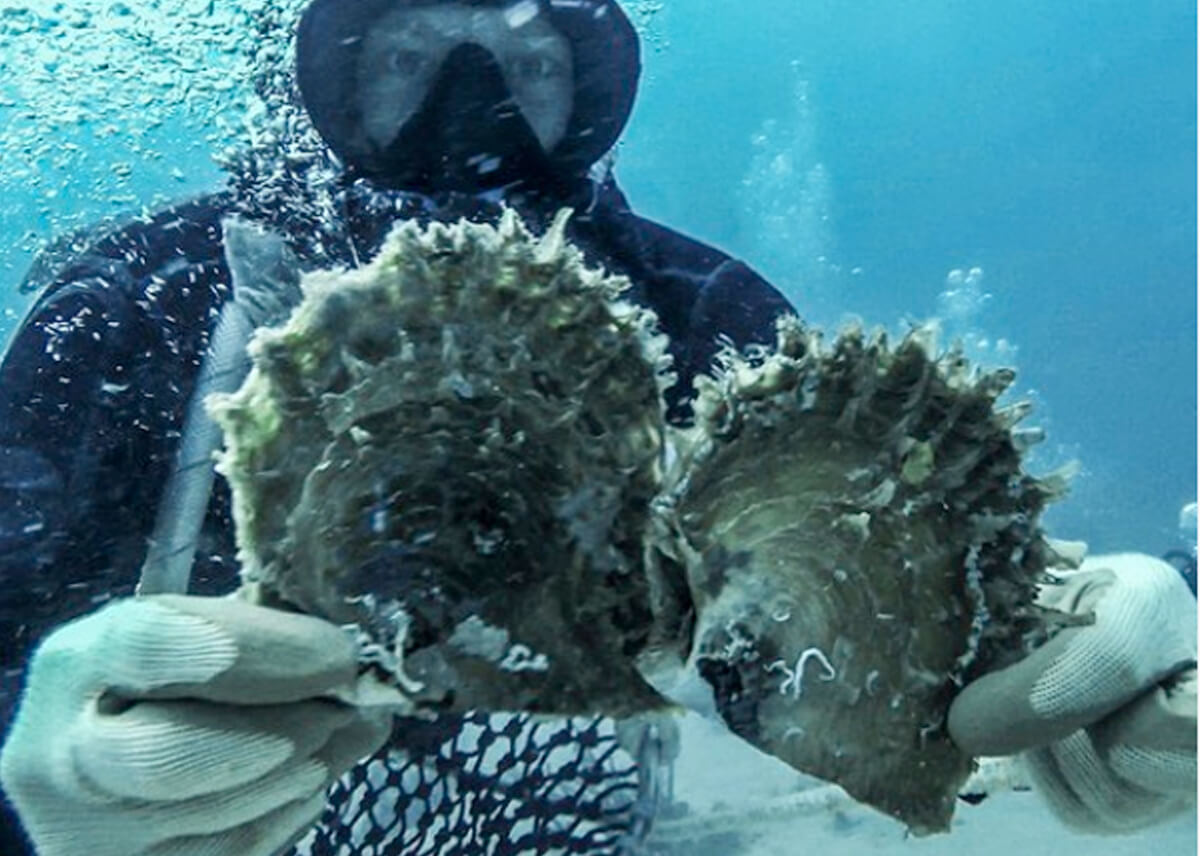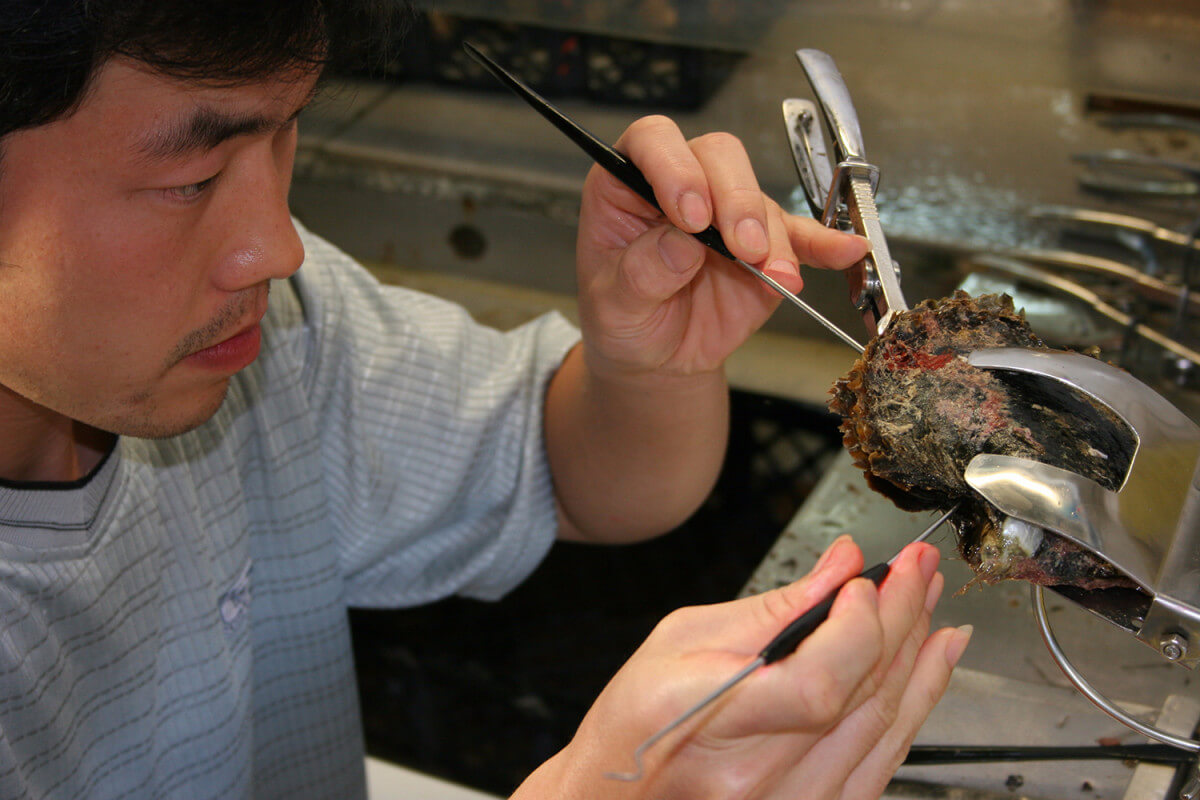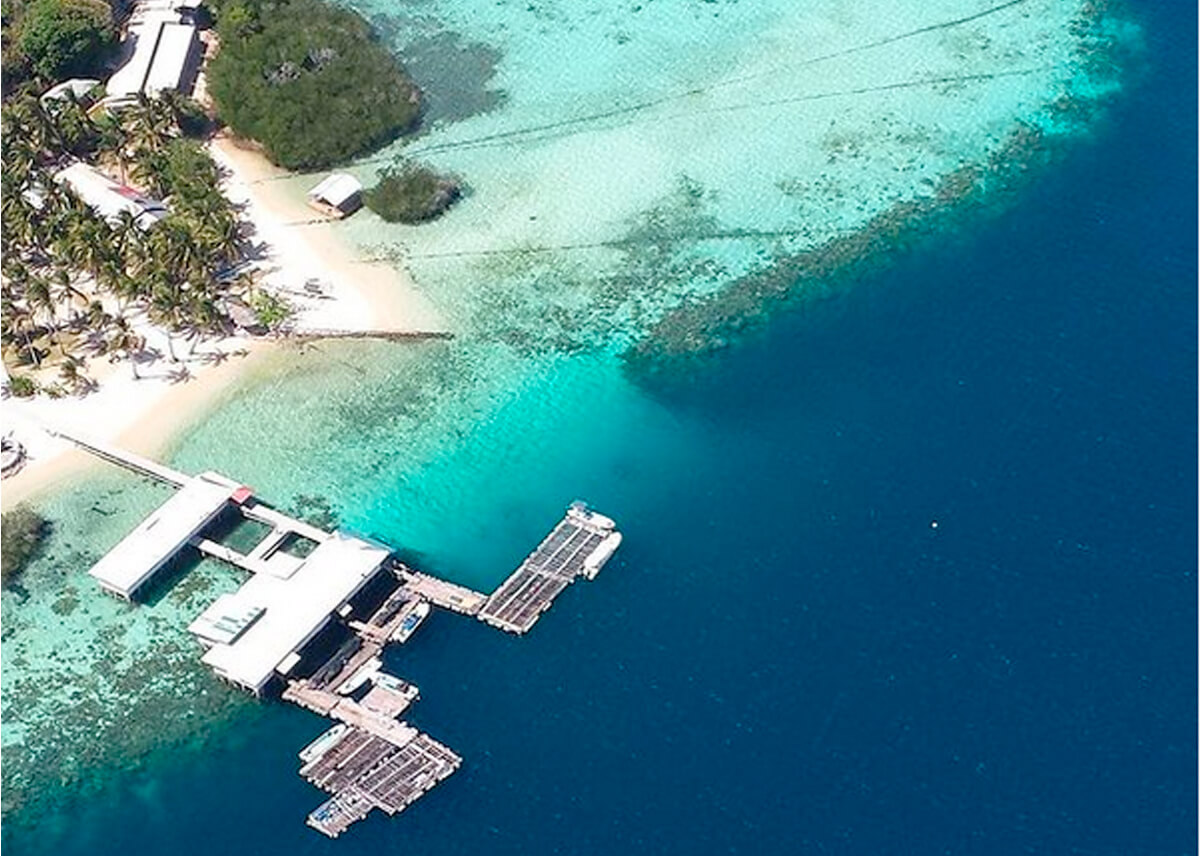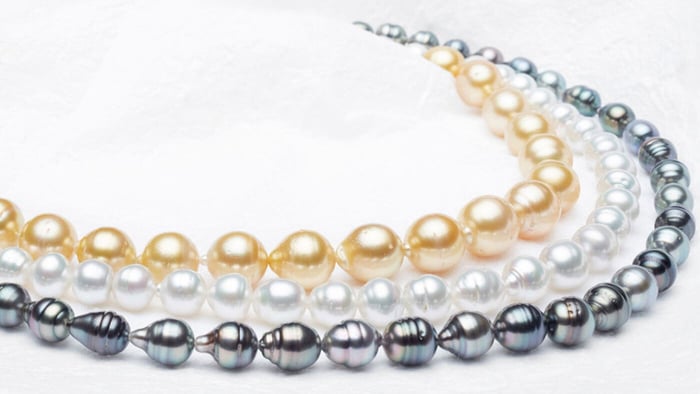Pearl jewelry has made its way back onto the runway. Pearl jewelry statements have debuted on red carpets, in engagement rings, and one of our new favorites… men wearing pearls. We love to see the pearl jewelry boundaries being pushed and pearls being appreciated the way they deserve.
Educating and informing our customers about pearl farming, pearl care, pearl characteristics, and everything in between is a high priority for us. We have decided to debunk time’s oldest tales about pearls. Sit back because the Pearl Myth Busters are on it. 😉

A grain of sand cannot form a pearl
We all love the story of one grain of sand striving to be more than just a little grain of sand. That grain of sand set off to explore the world and found itself becoming friends with a mollusk, who also was striving to be more than just a shell. The two plotted, planned, and together, they created a pearl. A beautiful story about working for something, appreciating the process, and enjoying the outcome.
Unfortunately, creating a pearl isn’t all that easy. If it were, pearls would be everywhere! They would be the marbles of the sea as opposed to the rare, extraordinary gem of the sea that they are. The actual story that should be told is: once upon a time, 1890 to be exact, a mollusk named Pinctada fucata, and a very ambitious young man named Mikimoto set out on a journey together to produce Akoya pearls through implanting different core materials, what is now referred to as nuclei, into mollusk shells. With their hard work and dedication, they produced the cultured Akoya pearls we know and love today.
Just as cute of a story as the grain of sand, right?

Cultured vs. Natural
This isn’t a boxing match; these are pearls we are talking about! Neither are fighting for the title, they are simply beautiful gems that were raised a little differently. So, let’s keep this one simple. Pearls form when an external stimulus (worms, parasites) knocks some cells out of place, and those cells settle elsewhere in the mollusk shell. That irritates the mollusk, which then will produce a secretion (nacre) that coats the irritant- which could, but not always, create a pearl. The term “cultured” simply means humans are that external stimulus. It’s science!!! All pearls commercially farmed today are cultured pearls and considered natural pearls.

Though from the ocean- pearls do not like water
Mollusks raise their pearls to become more than just a pearl stuck in the ocean. When pearls are brought above sea level, they see an entire world full of endless possibilities. Don’t stunt a pearl's potential by returning it back to the water. This means do not swim with your pearl jewelry like Kim Kardashian did with her diamond earrings. See how that turned out? This also means do not shower with your pearl jewelry. Conditioner is a great step to incorporate into your shower routine but let’s leave the pearls out. Lastly, do not clean your pearls with water. Remember, you are the one that needs to rinse and repeat in the shower. All pearls need are a microfiber cloth wipe down.

Pearls need to breathe
Remember that other story about a pearl that was locked away in a tall, brick tower and had extremely long hair and spun ladders out of silk? Neither do we, but someone should write that story. Regardless, don’t lock your pearls in a tall tower, or any airtight environment. Ziplock bags? No. Airtight safety boxes? No! Pearls need to live in breathable fabric spaces.
What came first the pearl or the mollusk?
Okay, so pearls are not the offspring of mollusks, but that subtitle was too clever not to say. The two of them are more like… college roommates! Depending on the type of pearl, this roommate situation could take years. Luckily, they're both very considerate roommates. Akoya pearls will take about 18 to 24 months to mature, Tahitian pearls will take about 18 to 24 months to mature, and South Sea pearls a minimum of 24 months to mature. That is just the maturing period alone. There is also the whole application process of grafting, nucleation, and all of that science stuff (culturing process). If the mollusk is unhappy with a certain nucleation application, the mollusk will have to try again and again until it accepts the right nuclei. Due to this long process, the pearl industry truly relies on each harvest and clean waters.

Well, we consider those myths busted. Pearl education is so important, especially for those looking to purchase their first piece of pearl jewelry. We are always here if you have any questions or concerns regarding pearl care, or education. One of the most insightful resources that all of Pearl Paradise members use is the Pearls as One course. Dive into that and you will be able to bust your own myths.









